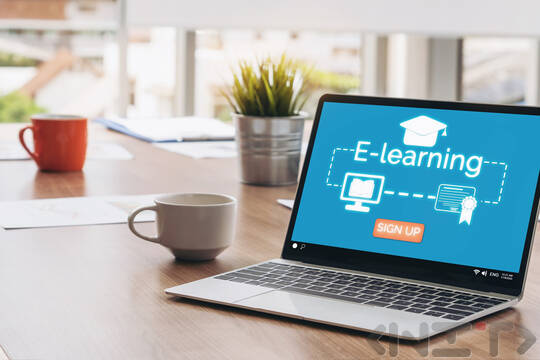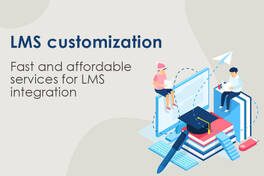
Approximate reading time: 5m 5s
The degree of retention of learners' attention is a major challenge in training. It doesn't matter how well the lecturer teaches if the trainees can't retain what is being said. Not because they are lazy or stupid - they just can't do it, psychologically and physiologically.
Research from the Research Institute of America, published in Forbes, shows that e-learning enables attention retention rates of 25% to 60%, which is 3 to 6 times higher than traditional training at 8% to 10%. This difference stems from the ability to go through them at an individual pace, as well as the learner going back and reviewing the required material. This is why online training has become a staple in corporate training.
The main goal is to present the content in a way that will appeal to the learners and hold their attention. The question is how do we achieve this? What do the target learners need, how do they learn and what will appeal to them? What eLearning format is most appropriate? What can be created within the given time and budget? With this article, we aim to present e-learning models and answer these questions.
There are 5 factors to consider when deciding on a training model:
- The size of the team that will be working on it;
- The amount of information to be presented;
- The specifics of the topic and the best way to present it;
- The understanding of the topic by the prospective learners;
- The objectives the training is aiming to achieve.
There are also three main types of e-learning content:
- Supportive. Provides the learner with information that is needed to complete a task quickly.
- Learning experience. Designed toward long-term knowledge and skill building. Unlike Supportive, it transforms the learner's behavior.
- Information. A combination of the previous two types. Aims to present information to learners to enhance their performance in a particular context. For example, product information for new employees.
Let's look at some of the basic models, their purposes and what they are good for.
Computer or Web-based training
In other words, online training. Presented via a personal computer or mobile device. Training courses can be web-based or local, synchronous (where materials are accessed at a set time, on a schedule) or asynchronous (where learners take it at an individual pace). They are most often presented through software such as an LMS - learning management system.
Research shows that e-learning can reduce training time by 40%-60% compared to traditional training. This means your employees can spend less time on training, improve their performance faster and increase your company's bottom line.
For learners, the biggest benefits of online training are the ability to learn at their own pace (95%) and no need to travel (84%). E-learning methods such as distance learning via mobile devices fully meet these learner needs.
The biggest disadvantage of computer-based learning is the high cost of implementing and creating content for it. This is the reason why this approach is mostly used by large organizations for long-term corporate training, such as e-safety training for new employees.
Gamification / Game-Based Learning / Serious Games
Gamification is one of the main features of an educational and recreational program. It presents learners with incentives to progress in the form of badges, results and certificates of achievement. Apart from engaging the learners, the benefits for companies are much greater. The rich features of the custom-made games offer complex systems with rewards, achievements and accumulation of points with the completion of given tasks.
Game-based learning can be defined as productive video games that aim to improve learners' skills, motivate them and put them in situations they are likely to encounter in real life.
There are differences in the implementation and goals of gamification, but most include the following 5 elements:
- Story or plot.
- Rewards - points, rankings, badges, etc.
- Timely personalized feedback. Each learner receives a 'reward or punishment' for the choices they have made. As well as a reason for it, in order to analyse their own mistakes and improve skills.
- Simulation of real situations.
- The aim, like any game, is to teach learners something.
The popularity of games in training is due to the increase in learner motivation and engagement, and the opportunity to practice without risk.
Gamification is most appropriate and commonly used for soft skills training, conflict resolution, security management, and complex manufacturing processes.
Micro Contents
Micro Content is - checklists, short quizzes, infographics, flash cards, diagrams, short videos or slideshows that present just one concept. The content is provided in small chunks in order to easily review the information ensuring recall.
Research points to the following advantages of micro content:
- Increases the effectiveness of training and content delivery by at least 17%.
- It is preferable to one-day training sessions.
- Shorter courses are more accessible and casual.
- 3-7 minute chunks of information meet the optimal attention span and working memory retention of the average learner.
- Modular micro-learning content is easier to create and update.
How to create successful microlearning content?
- Focus on just one concept. Make sure that in less than 7 minutes the learner will be able to grasp it.
- Compose quizzes to quickly and timely assess learner knowledge.
- Consider the design as micro content is often viewed from mobile devices.
- Use gamification to keep learners engaged.
- Analyze your learning statistics and results so you can improve.
- Don't spend time on theory and general principles. Micro-content is about providing "instruction" and your learners need ready-made solutions.
- Keep in mind that macro learning is not appropriate for complex content requiring knowledge of the theoretical foundation. In such a case, better choose another e-learning method.
Mobile content
Mobile learning is taken by learners in 'small bites' and is accessible through their mobile devices, anytime. Access to content and learning apps support learner focus as well as topic adoption. It also prevents cognitive overload because learners take in as much as they can in one go.
With the help of a proper LMS system, managing mobile content and learning is easy. You could make and upload company videos, texts, exercises, eBooks and more to be accessible anytime. This way, you could increase the effectiveness of your training.
Simulations and simulation games
Business simulation games are tools in e-learning that present structured and real-life based content. They are suitable for practicing marketing, accounting management, specific operations, etc. These online games that allow business management simulation assist employees in decision making as they see the results and their impact on the bottom line.
Virtual Reality/Mixed Reality
This e-learning model is a new way in which valuable knowledge is presented based on real-world experience. From chemistry labs that don't need consumables, to virtual team training on oil rigs from shore. Virtual reality tools provide the opportunity to practice knowledge and skills in a low-risk environment, replicating real-world situations and scenarios.
It is suitable for safely teaching vital skills to people who risk their lives on the job. Other areas where it is applicable are from healthcare and manufacturing, to education and real estate.
In business, applications of virtual reality include:
- Product demonstrations
- Staff training
- "Try before you buy" services
- Increasing brand interaction
- Explaining more complex concepts
- Webinars
Extremely popular during and after the outbreak. Great way to present information online that can reach an almost unlimited number of participants.
Usually live or pre-recorded, webinars provide listeners with the opportunity to ask questions in real time or be viewed at the learner's convenience. They assume collaborative learning and insight into the topic as well as timely responses.
For which trainings are online webinars best suited?
- Highly specific topics, such as industry updates;
- Topics that are better discussed live (Asking and answering questions is the most important element in presenting the topic);
- Demonstrations via screen sharing.
- Benefits of webinar in learning:
- Distance learning, in this way, assists in getting important information to multiple people at almost no cost.
- Pre-recorded, webinars are suitable for training new employees without the need for someone in person.
- To some extent, webinars are the most convenient form of training.
Webinars can be part of any e-learning course or can be used on their own.
Conclusion
There are many e-learning methods suitable for different purposes. Most can be combined into a content management system - LMS systems.
To make sure your system fits your company's needs, contact us and order.







